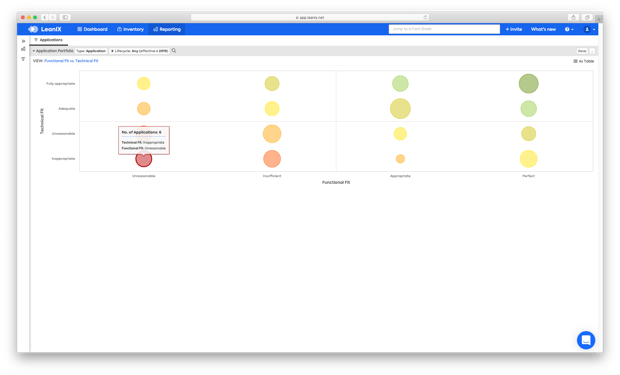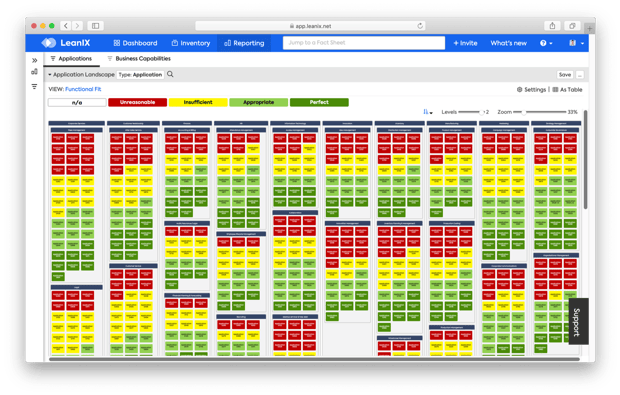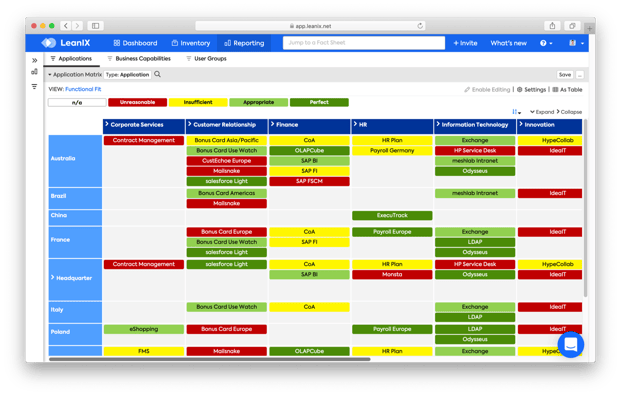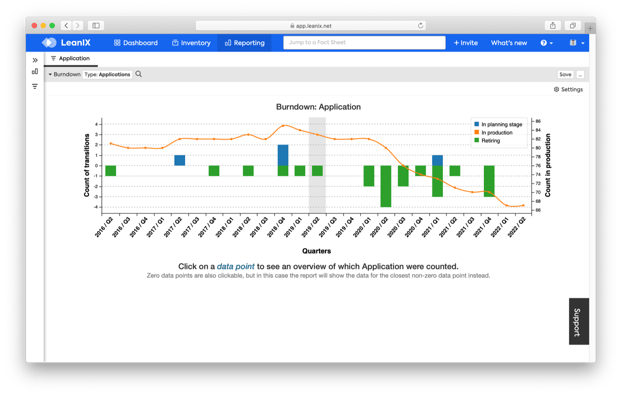
Representatives from LeanIX offered keynote and feature presentations in Chicago this week to audiences at Forrester’s 2019 Digital Transformation & Innovation Forum, a conference hosted by the global research firm and dedicated to tech-driven business enablement.
“Digital Means Designing for Change” – Mark McGregor
Up first was a keynote talk entitled “Digital Means Designing for Change” by LeanIX Strategist Mark McGregor, a master of business and process management with over 25 years’ worth of professional experience with varied software vendors and analysts.
For McGregor, digital transformation is a (long) journey—not a destination. It’s a continuous process, he explained, requiring leaders to focus more deeply on tooling and training in order to upgrade the fundamental behaviors of businesses. Not just on projects, programs and initiatives.
“Are you applying Digital to open up new business opportunities?” he asked the audience. “Or are you just doing what you’ve always done?”
In particular, McGregor believes digital technologies have the potential to open markets and create entirely new ways of doing business, and to illustrate his point, he cited one of LeanIX’s very own clients: DHL, a group that has internalized disruptive forces to become a juggernaut in the manufacturing of electric vehicles within Germany.
For DHL, digital is quite literally viewed as an integral piece of their delivery journey—whether in the use of hand-held devices for signing parcels, web interfaces for parcel tracking, automatic GPS route planning for delivery, online bookings for delivery and collection—and not just solely in terms of their front- or back-end IT systems. A tremendous example of progress, McGregor said, initiated by and aligned to business.
Yet such full-scale transformation can’t occur disproportionately throughout organizations, and for this reason, McGregor stressed the importance of distributing Enterprise Architecture efforts among diverse enterprise personnel to efficiently make sense of the incredible number of IT Applications and technologies in modern enterprises.
“There is no longer time or value in creating low-level IT diagrams. We must focus on managing at higher levels. Just as spreadsheets rather than visual models are used by financial planners, repositories that can manage information and interdependencies will overtake diagrammatic approaches to architecture.”
LeanIX clients like Bosch, Adidas, Vodafone and Merck have already discovered the benefits of such dynamic repositories—each of whom now boasting 1,000 or more participants who regularly maintain and access data-driven insights with a single IT Portfolio Management inventory powered by the tool.
“Funding Innovation Through Effective Portfolio Management” – Simon Barth
The second presenter from LeanIX at the Forrester conference was the VP of Demand, Simon Barth. Barth, one of LeanIX’s earliest employees and a central figure in the development of the Enterprise Architecture Management tool’s business-first functionalities, gave a presentation entitled “Funding Innovation Through Effective Portfolio Management”.
His findings from the world of IT Portfolio Management proved surprising even to an audience of seasoned digital strategists:
- 25% of time wasted due to stocktake in every project
- 20 - 30% of Applications & IT Projects proven redundant
- Only 26% of Applications typically migrated to the cloud
But as evidenced by Barth, given that the typical IT landscape contains, on average, 100 User Groups, 120 Business Capabilities and 600 Applications, it’s small wonder that organizations are unable to get a firm handle on their businesses—especially since IT budgets rarely grow to counteract these rising complexities and costs.
“Where does this leave room for innovation?” asked Barth. “Just consider how much this IT complexity limits the creative potential of businesses.”
A way to reduce this complexity, he advised, is with a strategic Portfolio Management Framework—and in particular, one beginning with an inventory and assessment of IT Applications and rationalized according to clear business value. Or, as Barth termed it, a “Business Capability-driven” design strategy.
And to activate such a design, he recommended IT Architects use modern tools like LeanIX that can offer leadership instant, data-driven insights into their portfolio and wherein Business Capabilities form the core of the Data Model. Of note, he highlighted several key features of these modern tools:
1. Functional Fit vs. Technical Fit Reports (with Live Filters for configurable views)
2. Reports arranged entirely by Business Capabilities
3. Application Matrix Reports showing functional overlap across regions for any given Business Capability
4. Burndown Reports tracking rationalization progress
Barth concluded his presentation with three major take-aways:
- Application inventory & assessment is a quick win
- Business Capabilities are powerful for communication
- Redundancies can be uncovered using the Application matrix
And with 180+ cross-industry clients who now use the tool daily and throughout their entire enterprises, LeanIX’s rapid success is perhaps evidence that global workforces now believe in the intuitive solutions available to reduce complexity in their IT environments.











